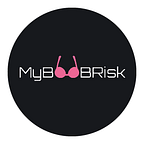Your Breast Cancer Risk Is The Perfect Companion To Regular Checking
Physically checking your breasts for any unusual changes on a regular basis is extremely important, but it is not enough on its own and should be supplemented by knowledge of your breast cancer risk. Every year, a large proportion of women are diagnosed with breast cancer at an early age and before receiving an invitation for screening mammograms through the NHS Breast Screening Programme. In many cases, these women would have been at a high risk of developing breast cancer through a set of adverse breast cancer risk factors, a family history, or an associated gene mutation, but they have no idea they are at risk or any easily accessible way of finding out.
In the UK, under the NHS Breast Screening Programme, eligible women will usually receive their first routine invitation for breast cancer screening between the ages of 50 and 53, depending on letter rotation, and will normally be invited every three years until they turn 71. Apart from expensive genetic testing, there is nothing really available for those at a pre-screening age (i.e., 20–53) who may be at a high risk of developing breast cancer at a younger age. Nevertheless, around 20% of all breast cancers are diagnosed in women under the age of 50. Moreover, mammography is a much less effective screening tool for younger women, who are more likely to have dense breast tissue, compromising the efficiency of routine mammograms in this age group even if they were available.
What are breast cancer risk factors?
Certain factors increase the risk of breast cancer, including increasing age, harmful use of alcohol, family history of breast cancer, early radiation exposure, reproduction, e.g., age at which menstrual periods begin and age at first live pregnancy, being an active smoker, oral contraceptive use, and hormone replacement therapy (HRT). Furthermore, some women have a higher risk of developing breast cancer than the general population because family members have had certain cancers, e.g., ovarian and breast. This risk is higher if a close relative has had such a cancer or if a relative has developed a certain cancer under the age of 50.
In addition, some people have an increased risk of breast cancer because they have an inherited gene fault. Certain inherited ‘high penetrance’ gene mutations greatly increase breast cancer risk, the most dominant being mutations in the BReast CAncer (BRCA) 1 and 2 genes, although others do exist. Such genes normally repair DNA. However, when they contain a harmful mutation, they are no longer able to function in their normal way. Genetic testing for all harmful gene mutations gives women the chance to ascertain if any personal or family history of breast cancer is due to an inherited gene mutation. This allows them to make more informed choices about the options available to reduce their risk of developing breast cancer in the future. Of course, the genetic mutation does not have to be historic or carried in a past generation; a BRCA1 or BRCA2 gene defect could start in the most immediate of family members, including yourself.
National guidelines already recognise various levels of risk
The UK National Institute for Health and Care Excellence (NICE) was
established over 20 years ago with a mandate to improve health and
wellbeing by putting science and evidence at the heart of health and
care decision-making. NICE has built a reputation as a world leader
in providing robust, independent, and trusted advice to the health
and care system and is widely respected as a world-class
organisation.
NICE guidelines for breast cancer care help medical professionals identify people who might have an increased risk of breast cancer due to a relevant family history, a related genetic mutation, or a certain combination of breast cancer risk factors. NICE recommendations for those with no prior personal history of breast cancer start as young as 20 and identify three potential levels of risk for the early development of breast cancer: average, moderate, and high-risk.
Continual monitoring is extremely important
Identifying high-risk women at a pre-screening age not only allows them to seek additional advice and request further consultation with a specialist but will undoubtedly improve their chances of survival should they subsequently be diagnosed with breast cancer and greatly reduce the clinical cost of treating such women at a later stage in their lives. Moreover, those women identified as having average or moderate risk get peace of mind knowing they are actively managing their breast health. Being identified as high-risk gives women a unique opportunity to take action early, undoubtedly leading to a much more positive outcome.
Furthermore, over time, a woman may give birth, change their contraceptive method, begin hormone replacement therapy (HRT), reach menopause, or alter some other lifestyle attribute that could adversely affect their level of risk. Personal medical conditions and family histories of ovarian, breast, and other related cancers can change at any time, so regularly monitoring their breast cancer risk between the ages of 20 and 53, i.e., on an annual basis and before they enter the NHS Breast Screening Programme, is considered highly advantageous and potentially life-saving.
“Early diagnosis is the holy grail of breast cancer treatment.”
— MyBOOBRisk
